
The comedy film is a film genre that emphasizes humor. These films are designed to amuse audiences and make them laugh. Films in this genre typically have a happy ending, with dark comedy being an exception to this rule. Comedy is one of the oldest genres in film, and it is derived from classical comedy in theatre. Some of the earliest silent films were slapstick comedies, which often relied on visual depictions, such as sight gags and pratfalls, so they could be enjoyed without requiring sound. To provide drama and excitement to silent movies, live music was played in sync with the action on the screen, on pianos, organs, and other instruments. When sound films became more prevalent during the 1920s, comedy films grew in popularity, as laughter could result from both burlesque situations but also from humorous dialogue.

The Evil Dead is a 1981 American independent supernatural horror film written and directed by Sam Raimi. The film stars Bruce Campbell, Ellen Sandweiss, Richard DeManincor, Betsy Baker, and Theresa Tilly as five college students vacationing in an isolated cabin in the woods, where they find an audio tape that, when played, releases a legion of demons and spirits. Four members of the group suffer from demonic possession, forcing the fifth member, Ash Williams (Campbell), to survive an onslaught of increasingly gory mayhem.

The evil clown, also known as the creepy clown, scary clown or killer clown, is a subversion of the traditional comic clown character, in which the playful trope is instead depicted in a more disturbing nature through the use of horror elements and dark humor. The modern archetype of the evil clown was popularized by the DC Comics supervillain Joker starting in 1940, and again in 1980s by Pennywise from Stephen King's It. The character can be seen as playing on the sense of unease felt by sufferers of coulrophobia, the fear of clowns.

Laughter is a pleasant physical reaction and emotion consisting usually of rhythmical, usually audible contractions of the diaphragm and other parts of the respiratory system. It is a response to certain external or internal stimuli. Laughter can rise from such activities as being tickled, or from humorous stories, imagery, videos or thoughts. Most commonly, it is considered an auditory expression of a number of positive emotional states, such as joy, mirth, happiness or relief. On some occasions, however, it may be caused by contrary emotional states such as embarrassment, surprise, or confusion such as nervous laughter or courtesy laugh. Age, gender, education, language and culture are all indicators as to whether a person will experience laughter in a given situation. Other than humans, some other species of primate show laughter-like vocalizations in response to physical contact such as wrestling, play chasing or tickling.
A catchphrase is a phrase or expression recognized by its repeated utterance. Such phrases often originate in popular culture and in the arts, and typically spread through word of mouth and a variety of mass media. Some become the de facto or literal "trademark" or "signature" of the person or character with whom they originated, and can be instrumental in the typecasting of a particular actor. Catchphrases are often humorous, but are never long enough or structured enough to be jokes in themselves. However, a catchphrase can be the punch line of a joke, or a callback reminder of a previous joke.

A villain is a stock character, whether based on a historical narrative or one of literary fiction. Random House Unabridged Dictionary defines such a character as "a cruelly malicious person who is involved in or devoted to wickedness or crime; scoundrel; or a character in a play, novel, or the like, who constitutes an important evil agency in the plot". The antonym of a villain is a hero.

LOL, or lol, is an initialism for laughing out loud, and a popular element of Internet slang, which can be used to indicate amusement, irony, or double meanings. It was first used almost exclusively on Usenet, but has since become widespread in other forms of computer-mediated communication and even face-to-face communication. It is one of many initialisms for expressing bodily reactions, in particular laughter, as text, including initialisms for more emphatic expressions of laughter such as LMAO and ROFL or ROTFL.

A blooper, or gag reel, is short clip from a film or video production, usually a deleted scene, containing a mistake made by a member of the cast or crew. It also refers to an error made during a live radio or TV broadcast or news report, usually in terms of misspoken words or technical errors.

Psychological horror is a subgenre of horror and psychological fiction with a particular focus on mental, emotional, and psychological states to frighten, disturb, or unsettle its audience. The subgenre frequently overlaps with the related subgenre of psychological thriller, and often uses mystery elements and characters with unstable, unreliable, or disturbed psychological states to enhance the suspense, horror, drama, tension, and paranoia of the setting and plot and to provide an overall creepy, unpleasant, unsettling, or distressing atmosphere.
In theatre, breaking character occurs when an actor fails to maintain the illusion that they are the character they are supposedly portraying. This is considered unprofessional while performing in front of an audience or camera. British English uses a slang term, corpsing, to specifically describe one of the most common ways of breaking character—when an actor loses their composure and laughs or giggles inappropriately during a scene. The British slang term is derived from an actor laughing when their character is supposed to be a corpse. If the breaking of character is particularly serious, it normally results in an abandonment of a take in recorded or filmed drama.

Kefka Palazzo is a video game character and the main antagonist in the 1994 Square role-playing video game Final Fantasy VI. Yoshitaka Amano created his visual design and director Yoshinori Kitase wrote his scenes. He is one of the most well-known and well-received villains in the Final Fantasy series. He was given a featured role in the fighting game Dissidia Final Fantasy and its sequels. He also appears as an enemy boss character in games including Theatrhythm Final Fantasy, Final Fantasy Artniks, Final Fantasy XIV: Stormblood, and Final Fantasy All the Bravest.
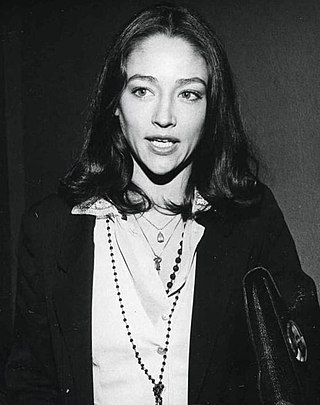
The final girl or survivor girl is a trope in horror films. It refers to the last girl(s) or woman alive to confront the killer, ostensibly the one left to tell the story. The final girl has been observed in many films, notable examples being Psycho, Voices of Desire, The Texas Chain Saw Massacre, Halloween, Alien, Friday the 13th, A Nightmare on Elm Street, Scream, and Terrifier 2. The term "final girl" was coined by Carol J. Clover in her article "Her Body, Himself: Gender in the Slasher Film" (1987). Clover suggested that in these films, the viewer began by sharing the perspective of the killer, but experienced a shift in identification to the final girl partway through the film.

The Cat and the Canary is a 1927 American silent comedy horror film directed by Paul Leni. An adaptation of John Willard's 1922 black-comedy play of the same name, the film stars Laura La Plante as Annabelle West, Forrest Stanley as Charlie Wilder, and Creighton Hale as Paul Jones. The plot revolves around the death of Cyrus West, who is Annabelle, Charlie, and Paul's uncle, and the reading of his will twenty years later. Annabelle is revealed as the heir, but she and the other guests must still face a night in his haunted mansion. The plot thickens when they are informed that a lunatic known as the Cat has escaped from an asylum and is hiding in the house.

Comedy horror is a literary, television, and film genre that combines elements of comedy and horror fiction. Comedy horror has been described as having three types: "black comedy, parody and spoof." Comedy horror can also parody or subtly spoof horror clichés as its main source of humour or use those elements to take a story in a different direction. Examples of comedy horror films include Abbott and Costello Meet Frankenstein (1948), An American Werewolf in London (1981), the Evil Dead franchise (1981–present), Gremlins (1984), Shaun of the Dead (2004), and The Cabin in the Woods (2011).
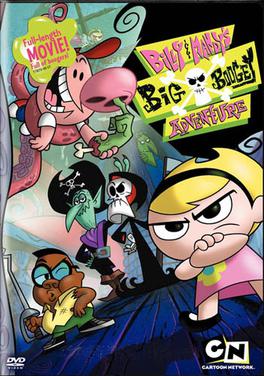
Billy & Mandy's Big Boogey Adventure is a 2007 made-for-television animated adventure fantasy comedy film produced by Cartoon Network Studios, and is the first made-for-television film based on the animated series The Grim Adventures of Billy & Mandy, the second being Billy & Mandy: Wrath of the Spider Queen. Big Boogey Adventure premiered in the United States on March 30, 2007, and in the UK on February 14, 2007, and was released on DVD in the U.S. on April 3, 2007.
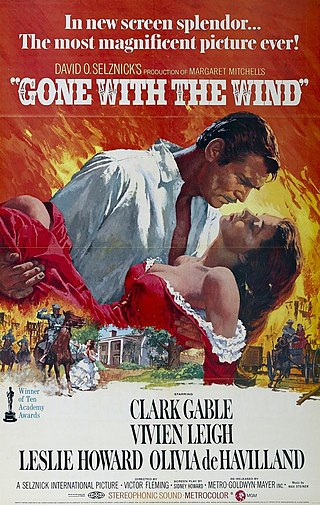
In film and television, drama is a category or genre of narrative fiction intended to be more serious than humorous in tone. The drama of this kind is usually qualified with additional terms that specify its particular super-genre, macro-genre, or micro-genre, such as soap opera, police crime drama, political drama, legal drama, historical drama, domestic drama, teen drama, and comedy-drama (dramedy). These terms tend to indicate a particular setting or subject matter, or they combine a drama's otherwise serious tone with elements that encourage a broader range of moods. To these ends, a primary element in a drama is the occurrence of conflict—emotional, social, or otherwise—and its resolution in the course of the storyline.
Goosebumps video games are a series of action-adventure games based on Goosebumps book series.
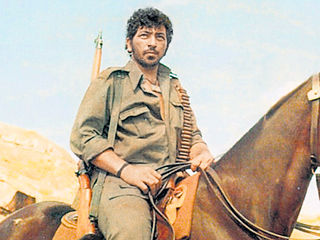
Gabbar Singh is a fictional character and the antagonist of the 1975 Bollywood film Sholay. It was written by the duo Salim–Javed, consisting of Salim Khan and Javed Akhtar. Played by Amjad Khan, he is depicted in Sholay as a dacoit with an evil laugh much like "El Indio", the robber, from the Western film For a Few Dollars More, who leads a group in looting and plundering the villages in the region of Ramgarh. He has a sadistic personality and insists on killing whenever required to continue his status and to take revenge on his enemies. The character is considered to be one of the most iconic villains in Indian cinema. He was featured in the 1991 spoof Ramgarh Ke Sholay, with Khan portraying a parody version of the character.
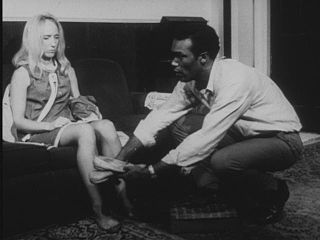
Depictions of race in horror films have been the subject of commentary by fans and academics. Critics have discussed the representation of race in horror films in relation to the presence of racist ideas, stereotypes and tropes within them. The horror genre has conversely also been used to explore social issues including race, particularly following popularization of social thrillers in the 2010s.
A horror game is a video game genre centered on horror fiction and typically designed to scare the player. The term may also be used to describe tabletop games with horror fiction elements.
















